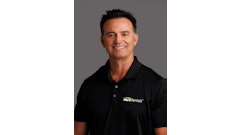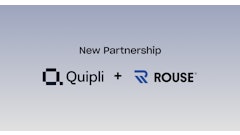
I have worked in the rental business in one form or another for the last 40 years. I believe the rental business is one of the best economic segments to work in. It will continue to grow with the American Rental Association Penetration Index increasing for years to come. I was also a CFO for one of the top 100 rental companies for many years and have been through all the financial upsets that came along during that time.
Currently, rental companies find themselves in a unique situation generated by the pandemic. We have an equipment shortage, higher prices on both new and used equipment, higher financing costs for both purchases and leases and tougher loan standards when applying for new loans or renewals. These are ALL tough issues to work through, and even more so with management personnel who do not have the experience of working through these types of issues.
After thinking about my experience comment above, I should say that very few financial personnel have worked in the current financial positions we find ourselves in, which makes it even more difficult to maneuver.
So, what do you do to get back to “normal”? The answer is...
- Make money, meaning cash in the bank.
- Manage the balance sheet
- Get control of your "spend"
If you think it through and concentrate on cash flow, you will wind up with more cash in the bank and a better bank relationship.
Right now, I am not encouraging rental managers to buy new equipment because of the price, the impact of the loan on the balance sheet, a potential reduction in $-utilization because current rates in the market are based on used equipment costs or older units that many rental companies have not turned over as they have in the past.
I suggest if you find you have a need for a special type of equipment for a good customer (that will not produce at least a 60 percent to 65 percent T-utilization), then find a way to rerent it.
The biggest need right now for rental companies is to have adequate techs available to inspect and repair units to keep T-utilization where it belongs. And, if you need to outsource some of the maintenance work, then do it. Same goes for pickup and delivery work. Outsource it if need be because you are probably not doing it any cheaper than what you pay a trucking company to do it.
The rental business is very much like a restaurant business. The faster you turn the tables, the more you make. Same goes for your rental business. Pick units up as soon as possible after the prior rental contract ends, inspect it, fix what needs to be fixed and get it out again.
You need to REVIEW both TU and $U every month and compare the results for each unit to the prior year's results. I use this work to prepare for the subsequent year's budget. I calculate both TU and $U for each machine and then by class and then adjust for purchase and sales, rental rate changes and any other issue that will impact TU and $U. This is especially important today because fleet ages have increased, requiring more maintenance if they are to meet the expected TU. Your accounting system should provide the TU and $U data. If you need help in this area, outsource it as necessary so that you have the information you need to run your business.
Rental cost of sales must be managed as well. These costs include tech and driver salaries and any outsourced work regarding these areas. Also included are all direct expenses except for depreciation. If you perform significant maintenance work, you are incurring time and materials cost that is part of the maintenance cost and not the rental cost. A 65 percent margin would be expected for maintenance work and a 35 percent margin for parts sales. And, as far as maintenance work goes, it must be turned over quickly and collected upon delivery back to the customer.
Another issue that impacts both the balance sheet and income statement concerns depreciation. Please try to wind up with depreciated values in line with orderly liquation value. In other words, do not penalize your equity account nor your net profit with an excessive depreciation charge. If you completed a major repair on a rental unit, do not expense it but add it to the “cost” of the unit repaired and deprecation it over a three-year period.
Rental company personnel should be reviewing financial stats for the industry, which are available from various sources. Equipment values and operating costs are both available. Contractors also use this data to determine how to bill equipment that they own, thus providing your management team with an opportunity to provide lower costs to contractors that own the equipment.
The rental billing has to be sent out as soon as the rental contract is completed and a report from the driver states no billable damage is evident. And it must be CORRECT the first time out.
I like to use the restaurant example again: When I visit Restaurant No. 1, I order, and the food is on the table no more than 10 minutes later.
When I visit Restaurant No. 2, which is much bigger with way more seats, it takes 20 minutes to place your order and another 20 minutes to receive it and another 10 to 15 minutes to get your bill. Every time I go there, I think about how much money they are leaving on the table.
I hope rental managers, considering these economic conditions, are taking steps to tighten up cash flow.


















![Building Angled Sm Edit 6050b8d213f1b[1]](https://img.forconstructionpros.com/mindful/acbm/workspaces/default/uploads/2025/09/building-angled-sm-edit6050b8d213f1b1.Ygq5aAos3b.png?ar=16%3A9&auto=format%2Ccompress&crop=focalpoint&fit=crop&fp-x=0.53&fp-y=0.23&fp-z=2&h=135&q=70&w=240)

